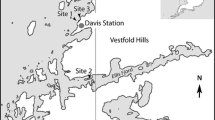Abstract
Using the number of segments of pleopod rami as a marker of instar number, the population structure (instar composition) of the mesopelagic gammarid amphipod Cyphocaris challengeri was investigated by monthly samplings from May 1997 to April 1999 at a station off southwest Hokkaido, Japan. Laboratory-rearing experiments were also conducted to establish the relationship between the number of segments of pleopod rami and instar number, and to estimate the growth pattern of this gammarid based on the intermolt period and molt-increment data. Stratified sampling in the field (0 to 200 and 200 to 400 m depth strata) showed this species occurred mainly at 200 to 400 m depth during the day. Instar analysis indicated that C. challengeri has 12 instars in females and 11 instars in males. Based on observations of secondary sexual characters, Instars 1 to 6 were designated juveniles (Instars 1 to 3 occurred in the marsupia of gravid females); in males, 7 to 9 were immature and 10 and 11 were mature, while in females 7 and 8 were immature and 9 to 12 were mature. Off southwest Hokkaido, Instar 4 (just released from a female's marsupium) was found throughout the year, with a peak abundance occurring in April to July of each year. A sequential development of Instar 4 to 9 (youngest adult instar) through the year was observed. Generation length (i.e. the time required to grow from Instar 4 to 10) was estimated from a laboratory-obtained growth curve to be 216 to 584 d at the in situ temperature range (2 to 5 °C), which is consistent with observations on field populations. Specimens older than Instar 9 were rare in the field and could not be used in laboratory-rearing experiments, so longevity could not be estimated. Eggs were oval and measured 0.6 mm (large diameter). Brood size ranged from 20 to 65. Comparing the present results with those of epipelagic hyperiid amphipods, the nearly identical growth rates together with the production of fewer but larger eggs seen in C. challengeri appear to reflect to the typical life mode of deep-living pelagic crustaceans.
Similar content being viewed by others
Author information
Authors and Affiliations
Additional information
Received: 14 February 2000 / Accepted: 6 July 2000
Rights and permissions
About this article
Cite this article
Yamada, Y., Ikeda, T. Development, maturation, brood size and generation length of the mesopelagic amphipod Cyphocaris challengeri (Gammaridea: Lysianassidae) off southwest Hokkaido, Japan. Marine Biology 137, 933–942 (2000). https://doi.org/10.1007/s002270000397
Issue Date:
DOI: https://doi.org/10.1007/s002270000397




